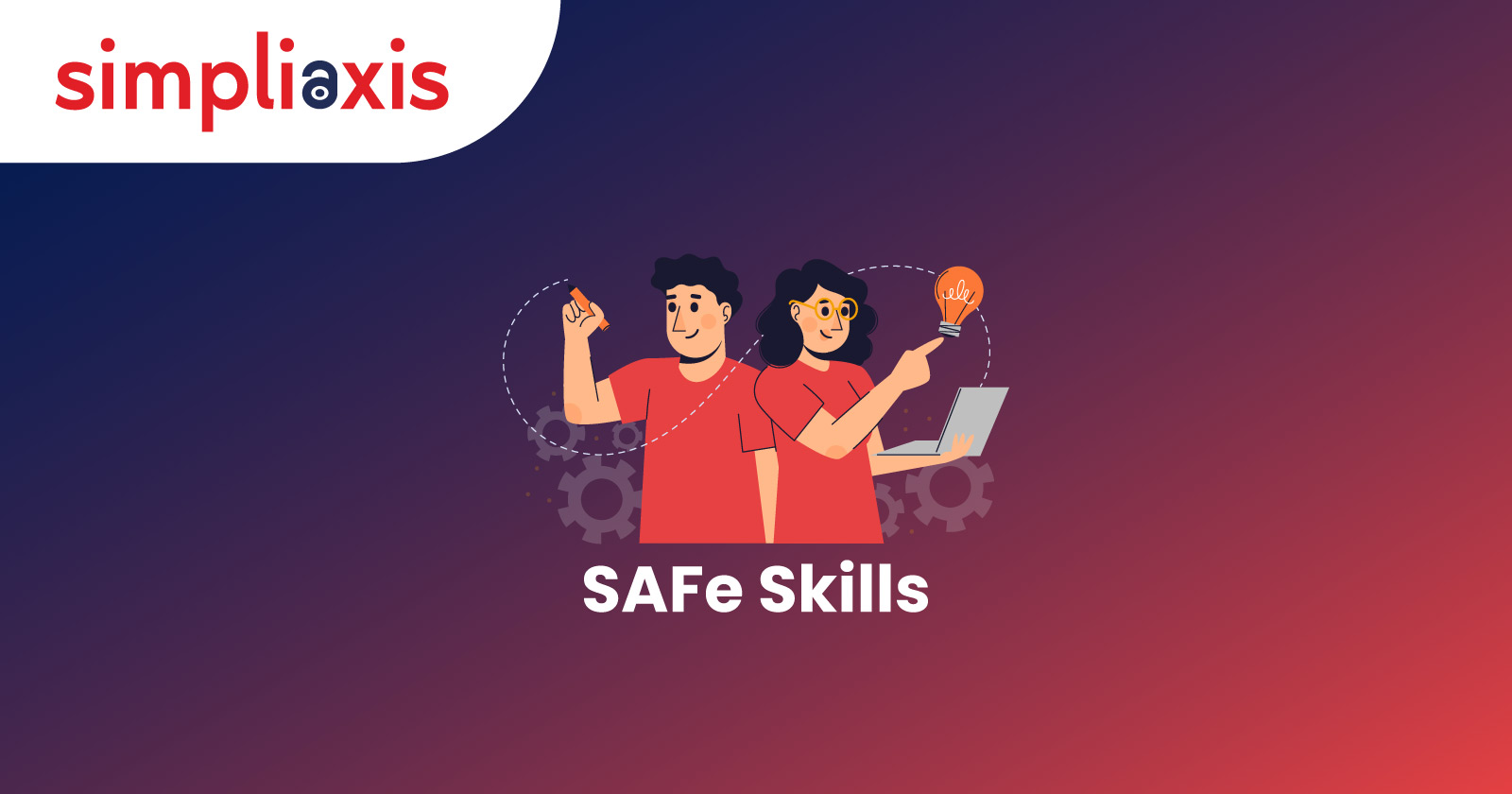Introduction :-
Agile has become a necessary part of every organization in this fast-moving business world.Scaled Agile Framework is a dynamic tool that helps businesses make the best use of agile practices in and out of the venture. Becoming a certified SAFe can help any working professional to boost their career and look out for necessary changes.
This blog will help you understand the essential SAFe skills to help you earn certification and guide you to mastering your career.
What is SAFe?
SAFe is a detailed framework that helps organizations excel in their scaled agile procedures successfully. Scaled Agile Framework offers a standardized approach to plan tasks, synchronize teams, and promote collaboration and communication within the team and organization. The team can adapt and implement the SAFe Agile methodologies in the operations.
The main goal of SAFe is to align the company objectives with the delivered value. The business can deliver faster results by assisting their teams to operate faster. SAFe practices help business stakeholders to have a fair knowledge of the business strategic plan and the goals to be achieved; this will help in SAFe functionalities.
Why SAFe Certification?
SAFe certification validates your competencies in agile principles and practices and how you apply them to large-scale businesses. This will make you an integral part of any organization. The certification tailors your knowledge and skills to SAFe and gives you confidence in how to lead complex projects, manage and mitigate risks, and ensure you are aligned with strategy and execution.
Essential SAFe Skills to Build
Aspirants must build a powerful skillset to become certified SAFe professionals. Below are some of the essential Scaled Agile Framework (SAFe) skills one must focus on:
Team and Technical Agility
Agile Team Practices: Gain in-depth knowledge of Scrum, Kanban, or other agile methodologies to deliver fine-quality work progressively. Understand roles, responsibilities, and artifacts in agile teams.
Built-in Quality: Use practices like test-driven development (TDD), continuous integration, and refactoring to check that all work meets superior quality standards. This ensures that quality is an important aspect of your product development process.
Agile Engineering Practices: Apply technical practices such as pair programming, code reviews, and DevOps to enhance productivity and quality.
Lean-Agile Leadership
Lean-Agile Mindset: Grasp lean thinking and agile values & principles to promote a culture of continuous improvement and collaboration. Managers need to adapt standard patterns that promote communication, innovation, and efficiency.
Change Management: Lead organizational change by advocating for lean-agile principles, removing impediments, and encouraging a culture of relentless improvement.
Enterprise Solution Delivery
Solution Intent: Master the vision and objectives of large-scale solutions. Having alignment between strategic goals and execution across the enterprise.
Agile Architecture: Build scalable and adaptable agile architectural solutions that support continuous delivery of business values and integration.
Coordinating Trains and Suppliers: Manage dependencies and integrations across multiple agile release trains (ARTs) and external suppliers to ensure seamless delivery.
Lean Governance
Lean Budgeting: Applying lean principles to different aspects of the organization like budgeting, funding, and financial management. This will help the business to ensure that all the resources are allocated efficiently and effectively.
Governance and Compliance: Ensure agile practices comply with the regulatory and organizational standards while maintaining flexibility and responsiveness.
Metrics and Reporting: Use lean metrics to measure the project or product progress, performance, and value delivery, ensuring transparency and accountability.
Agile Product Delivery
Customer-Centric and Design Thinking: SAFe aims to deliver value to customers through iterative development and focus on improvement through frequent feedback surveys. Understanding the customer's needs and designing in-depth solutions for the queries.
Product Management: Develop and manage a product vision, strategy, and roadmap that aligns with business objectives. Prioritize features and initiatives based on value and impact.
Release on Demand: Implement processes that allow you to release products and features based on customer needs and readiness, ensuring a faster time-to-market.
DevOps and Release on Demand
Continuous Delivery Pipeline: Implement a channel for the steps automation required to build, test, and deploy software. The pipeline must be efficient and reliable enough.
DevOps Culture: Build a culture of collaboration between development and operations teams to streamline workflows and reduce time-to-market.
Release Automation: Use tools and practices to automate the release process, minimizing manual intervention and reducing lead time.
Conclusion
Becoming a certified SAFe Professional is a great achievement for your career. This acknowledges your skills towards Agile transformation practices in your organization. By upskilling your SAFe Skills competencies, you can secure your position in the organization and become a valuable asset. Start your professional development journey with the SAFe certification courses and unlock new career opportunities.




















